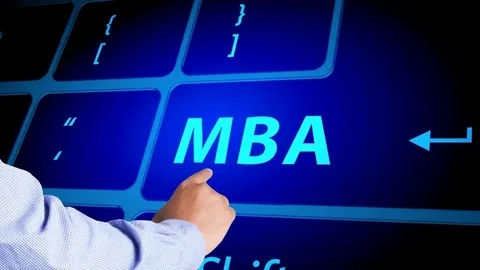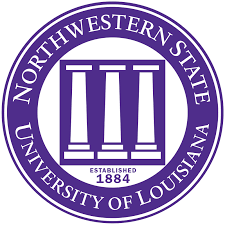In the ever-evolving landscape of education, AES Education—which stands for Applied Educational Strategies—has emerged as a transformative approach to advancing learning.
This article will explore how AES leverages innovative techniques, evidence-based practices, and cutting-edge technology to create a learning environment that empowers both students and educators.
AES Education focuses on tailoring educational experiences to meet the unique needs of learners. Unlike traditional education models that often rely on rote memorization, AES emphasizes critical thinking, problem-solving, and the application of knowledge in real-world contexts.
What is AES Education?
AES, or Applied Educational Strategies, is an instructional approach that integrates practical, research-backed methodologies to enhance learning outcomes. By centering on student engagement and personalized learning paths, AES promotes deeper understanding and retention of knowledge.
Importance of AES in Modern Education
In today’s fast-paced, information-rich world, traditional educational systems are often seen as outdated. AES provides a dynamic alternative by fostering adaptability, creativity, and lifelong learning skills in students, preparing them for the complex challenges of the 21st century.
Historical Context of AES
Evolution of Educational Strategies Over Time
Education has always been at the forefront of societal development. From the ancient methods of Socratic questioning to the industrial age’s focus on standardized education, the strategies employed by educators have continuously evolved to better serve learners. AES builds on this legacy, integrating modern insights from cognitive science, pedagogy, and technology.
The Role of Technology in Shaping AES
The rise of digital tools and platforms has revolutionized education, allowing for greater personalization and scalability. AES incorporates these technological advances to create flexible learning environments that cater to the diverse needs of students.
Core Principles of AES
Student-Centered Learning
At the heart of AES is the belief that students should be active participants in their own education. This principle is reflected in practices such as project-based learning, which encourages learners to take ownership of their educational journeys.
Evidence-Based Practices
AES emphasizes the use of data-driven strategies to inform teaching methods. By analyzing student performance and feedback, educators can make informed decisions that optimize learning outcomes.
Key Components of AES
Curriculum Design and Development
AES promotes the development of curricula that are both rigorous and relevant. Educators focus on creating content that not only meets academic standards but also connects to real-world applications.
The Role of Assessment in AES
Assessments in AES go beyond traditional tests. They include formative assessments, which provide ongoing feedback to students, and summative assessments, which measure overall achievement. This continuous loop of feedback ensures that students are always progressing.
Benefits of AES Education
Enhancing Student Engagement
AES strategies actively engage students by integrating interactive learning methods, such as group work and hands-on activities. This not only makes learning more enjoyable but also fosters a deeper understanding of complex concepts.
Fostering Critical Thinking and Problem-Solving Skills
By focusing on real-world applications, AES helps students develop the critical thinking and problem-solving skills necessary for success in both academic and professional settings.
AES and Technology Integration
Use of Educational Technologies in AES
Technology plays a pivotal role in AES, with tools like learning management systems (LMS) and adaptive learning software offering personalized learning experiences that can adapt to each student’s pace and style.
Virtual and Augmented Reality in AES
Emerging technologies, such as virtual reality (VR) and augmented reality (AR), are being integrated into AES to create immersive learning experiences. These technologies allow students to explore complex subjects, such as history or science, in interactive and engaging ways.
Role of Educators in AES
Teachers as Facilitators
In AES, the role of the teacher shifts from being a sole knowledge provider to a facilitator of learning. Educators guide students through inquiry-based learning processes, encouraging independence and curiosity.
Continuous Professional Development for Educators
For AES to be effective, educators must engage in ongoing professional development. This ensures they are equipped with the latest strategies and tools to meet the evolving needs of their students.
AES in Different Educational Levels
Application of AES in K-12 Education
In primary and secondary schools, AES can be applied through personalized learning plans that cater to individual student needs. This ensures that each learner progresses at their own pace while meeting educational standards.
AES in Higher Education
AES is equally valuable in higher education, where it promotes interdisciplinary learning and fosters collaboration between students, professors, and external experts.
AES and Inclusive Education
Adapting AES for Students with Diverse Needs
One of the core strengths of AES is its ability to be adapted to students of all learning abilities and backgrounds. Inclusive education ensures that every student, regardless of their physical, cognitive, or emotional needs, can participate fully in the learning process. AES incorporates strategies such as differentiated instruction, where teaching methods are tailored to meet the varying needs of individual students.
Strategies for Inclusive Classrooms
AES fosters an inclusive environment by providing resources like assistive technologies (e.g., text-to-speech software, digital organizers) and individualized learning plans that cater to students with special educational needs. This promotes a culture of equity where every learner has the opportunity to succeed.
Challenges in Implementing AES
Resistance to Change in Traditional Educational Systems
Despite its benefits, implementing AES can face significant hurdles, particularly in traditional educational institutions that are often resistant to change. These systems may be accustomed to more rigid, standardized teaching methods, and moving towards a more flexible, student-centered approach requires a significant shift in mindset and policy.
Financial and Resource Constraints
Another major challenge in adopting AES strategies is the financial cost involved. Schools and universities may struggle with the resources needed to implement advanced technologies, provide continuous teacher training, and redesign curricula. However, with adequate investment and planning, these obstacles can be overcome to create more effective and equitable educational systems.
Future Trends in AES
The Role of Artificial Intelligence in AES
Artificial intelligence (AI) is rapidly becoming an integral part of education, and AES is no exception. AI-powered tools can personalize learning experiences for students by analyzing data on their learning habits, strengths, and areas for improvement. AI tutors and chatbots can also provide real-time assistance, ensuring students receive immediate feedback.
Predictive Analytics in Education
With the rise of big data in education, AES leverages predictive analytics to foresee student outcomes and tailor interventions accordingly. By analyzing historical data, educators can identify at-risk students early on and implement strategies to improve their chances of success, such as extra tutoring or personalized learning plans.
Measuring the Effectiveness of AES
Key Performance Indicators (KPIs) in AES Education
Measuring the success of AES requires a set of well-defined key performance indicators (KPIs). These can include student engagement levels, assessment scores, retention rates, and even long-term outcomes like college admissions or job placements. Regular data collection and analysis help schools refine their AES approaches for better results.
Long-Term Outcomes of Applied Educational Strategies
The true value of AES lies in its ability to equip students with lifelong learning skills. Research shows that students educated through AES are more likely to excel in critical thinking, collaboration, and adaptability—skills highly sought after in the modern workforce. Over time, AES can foster resilience and innovation in learners, preparing them for successful careers and fulfilling lives.
Case Studies of AES Implementation
Successful AES Models in Schools and Universities
Many schools and universities around the world have successfully implemented AES with remarkable results. For example, Finland’s education system has gained international recognition for its student-centered approach, project-based learning, and emphasis on creativity. Similarly, universities such as Harvard and Stanford have integrated AES principles in their curriculum, encouraging students to think critically and apply their knowledge in real-world contexts.
Lessons Learned from Global AES Initiatives
From these case studies, it becomes clear that successful AES implementation requires strong leadership, flexibility, and community involvement. Schools that have embraced AES also prioritize professional development for educators and ensure that curricula are continuously updated to reflect the latest research and best practices.
How Parents and Communities Can Support AES
Building Partnerships Between Schools and Communities
Parents and the broader community play a crucial role in the success of AES. Schools should foster open communication with parents, informing them about AES methods and how they can support their children’s learning at home. Involving local businesses and organizations can also provide students with real-world learning opportunities, such as internships or project-based collaborations.
Parental Involvement in AES Education
Parents can further support AES by encouraging self-directed learning at home, providing a space for students to work on school projects, and engaging in discussions about their children’s educational experiences. When parents understand and appreciate AES methods, they can reinforce the same principles outside of the classroom, ensuring a more cohesive learning experience.
Conclusion
In conclusion, Understanding AES Education: Advancing Learning Through Applied Educational Strategies offers a promising framework for modern education. By focusing on student-centered approaches, embracing technology, and using evidence-based methods, AES helps students develop the skills they need to thrive in an ever-changing world. While challenges such as resistance to change and financial constraints remain, the long-term benefits of AES—such as enhanced engagement, critical thinking, and real-world problem-solving—make it an essential tool for educators. As AES continues to evolve with the rise of AI and predictive analytics, it will play a pivotal role in shaping the future of education.
FAQs
Q1: What is AES Education?
AES Education stands for Applied Educational Strategies, an approach that focuses on personalized, student-centered learning through evidence-based practices and technology integration.
Q2: How does AES benefit students?
AES helps enhance student engagement, critical thinking, and problem-solving skills by applying knowledge to real-world contexts and tailoring instruction to individual learning needs.
Q3: What are the challenges of implementing AES?
The main challenges include resistance to change in traditional educational systems and financial constraints, especially in acquiring new technologies and providing ongoing teacher training
Q4: How is technology integrated into AES?
AES leverages educational technologies like learning management systems, AI-powered tools, and immersive technologies such as virtual reality (VR and augmented reality (AR) to create personalized, interactive learning experiences.
Q5: Can AES be applied at all educational levels?
Yes, AES can be implemented in K-12 education, higher education, and even in professional learning environments, with tailored strategies for each level to enhance student engagement and learning outcomes.
Q6: What role do parents play in AES education?
Parents are essential partners in AES, as they can support learning by reinforcing self-directed learning at home, engaging with educators, and building strong school-community partnerships.




